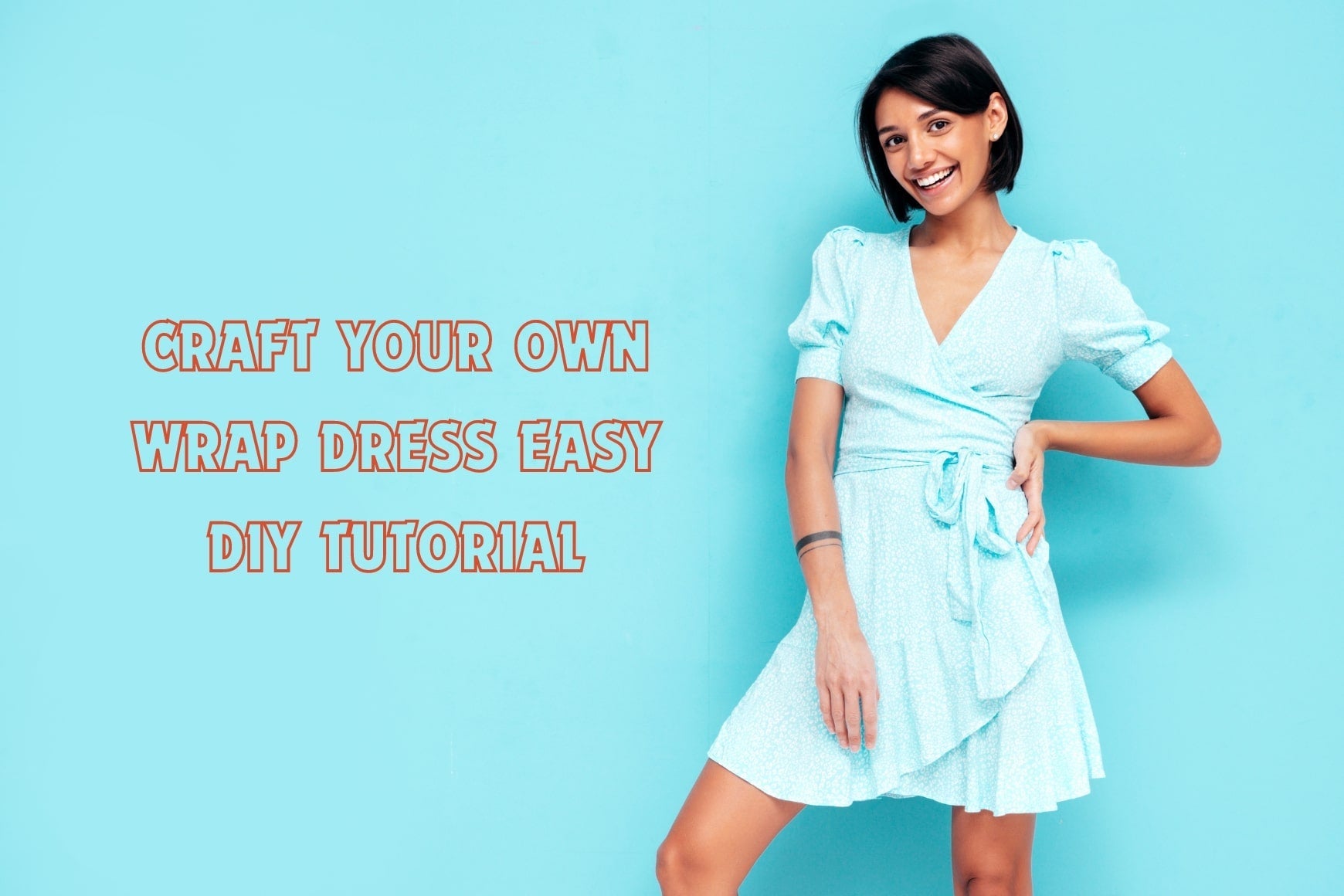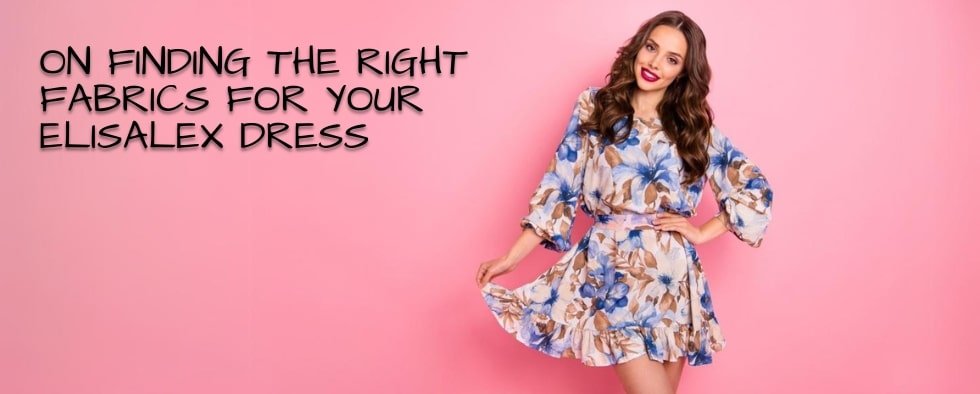Every girl wishes to look stylish by wearing skirts. When creating a stylish and flattering paperbag waist skirt, selecting the right fabric is crucial. The fabric you choose can significantly impact the overall look, feel, and durability of your skirt. From satin to silk, cotton to rayon, and even mesh lace, each fabric offers unique characteristics that can enhance or detract from your finished garment.
What is Paperbag Waist Skirt?
A paperbag waist skirt is not just a piece of clothing; it's a fashion statement that elegantly cinches at the waist, creating a flattering, ruffled effect that resembles the top of a paper bag.
This stylish skirt gathers and tucks around the waistline, secured by a belt or elastic, offering both comfort and a touch of sophistication. Its versatility is unmatched, allowing it to be paired with a variety of tops, making it perfect for both casual outings and more formal events.
Beyond its aesthetic appeal, the paperbag waist skirt celebrates all body types, enhancing the silhouette and injecting a dose of confidence into your stride. Whether you're aiming for a chic, professional look or a relaxed, weekend vibe, this skirt effortlessly transitions to fit the occasion, proving itself as a must-have in any fashion-forward wardrobe.
Do you love to wear Paperbag Waist Skirts and want to know how you can make paperbag waist skirts?
Here we will discuss some best Paperbag Waist skirts and steps on how to make them efficiently.
Best Fabric for Making Paperbag Waist Skirt
Satin
Satin is a popular choice for paperbag waist skirts due to its luxurious appearance and smooth texture. Made from a blend of silk, polyester, or other synthetic fibers, satin fabric drapes beautifully and adds an element of sophistication to any outfit. Its glossy surface reflects light, creating a subtle sheen that elevates the overall aesthetic of the skirt.
One of the main advantages of using satin for a paperbag waist skirt is its versatility. Satin is available in a wide range of colors and prints, allowing you to customize your skirt to suit your personal style. Whether you prefer a bold, vibrant hue or a subtle, understated pattern, satin offers endless possibilities for creativity.
Additionally, satin is relatively easy to work with, making it suitable for both beginner and experienced sewists. It holds its shape well, making it ideal for creating the gathered, cinched effect characteristic of paperbag waist skirts. However, satin can be prone to wrinkling, so it's essential to handle it with care during the sewing process and to use a pressing cloth when ironing.
Cotton
Cotton is a classic choice for paperbag waist skirts, prized for its comfort, durability, and versatility. This natural fiber is known for its softness and breathability, making it ideal for wearing in warm weather or for prolonged periods.
One of the key benefits of using cotton for a paperbag waist skirt is its ability to hold its shape while still providing a relaxed, casual look. Cotton fabric is available in a variety of weights and textures, allowing you to choose the perfect option for your desired aesthetic. Whether you prefer a lightweight, airy cotton for a summer skirt or a heavier, more substantial cotton for a winter look, there's a cotton fabric to suit every need.
Another advantage of cotton is its ease of care. Cotton fabric is machine washable and tends to resist shrinking and fading, making it a practical choice for everyday wear. Additionally, cotton is readily available and affordable, making it an excellent option for sewists on a budget.
Rayon
Rayon is a synthetic fabric that mimics the look and feel of natural fibers like silk and cotton. Known for its softness and drape, rayon is a popular choice for paperbag waist skirts, offering a luxurious feel without the high price tag of silk.
One of the main advantages of using rayon for a paperbag waist skirt is its fluidity. Rayon fabric drapes beautifully, creating a flattering silhouette that skims the body without clinging. This makes it an excellent choice for skirts with a gathered waistband, as it allows the fabric to gather and flow gracefully.
Additionally, rayon is available in a wide range of colors and prints, making it easy to find the perfect option for your skirt. Whether you prefer a solid color for a classic look or a bold print for a statement piece, rayon offers plenty of choices to suit your style.
However, rayon can be prone to wrinkling and shrinking, so it's essential to handle it with care during the sewing process and to follow the manufacturer's care instructions when laundering the finished skirt.
Silk
Silk is the epitome of luxury when it comes to fabrics, prized for its softness, luster, and elegance. While silk can be more expensive than other fabric options, its unmatched beauty and quality make it worth the investment for a special occasion paperbag waist skirt.
One of the most significant advantages of using silk for a paperbag waist skirt is its exquisite drape. Silk fabric flows effortlessly, creating a fluid silhouette that enhances the wearer's figure. This makes it an excellent choice for skirts with a gathered waistband, as it allows the fabric to gather and fall gracefully.
In addition to its luxurious feel, silk fabric is also incredibly versatile. It can be dyed in a wide range of colors, from rich jewel tones to soft pastels, allowing you to create a skirt that perfectly complements your personal style. Silk fabric is also available in various weights and textures, ranging from lightweight chiffon to heavier satin, giving you plenty of options to choose from for your skirt.
However, silk fabric requires special care to maintain its beauty and longevity. It is typically dry clean only, and it can be prone to wrinkling and water spots, so it's essential to handle it with care and store it properly when not in use.
Mesh Lace
Mesh lace fabric adds a touch of feminine charm and elegance to a paperbag waist skirt, making it perfect for special occasions or romantic ensembles. This delicate fabric features intricate floral or geometric patterns that add visual interest and texture to the skirt.
One of the main advantages of using mesh lace for a paperbag waist skirt is its versatility. Mesh lace fabric is available in a wide range of colors and designs, allowing you to customize your skirt to suit your personal style. Whether you prefer a classic white lace for a timeless look or a bold, colorful lace for a modern twist, there's a mesh lace fabric to suit every taste.
Additionally, mesh lace fabric is lightweight and breathable, making it comfortable to wear in warmer weather. It also has a bit of stretch to it, which can enhance the comfort and fit of the skirt.
However, mesh lace fabric can be delicate and prone to snagging, so it's essential to handle it with care during the sewing process. It may also require special care when laundering, so be sure to check the manufacturer's care instructions before cleaning your skirt.
Expand your knowledge on Best Fabric for Summer Skirt.
DIY Paperbag Waist Skirt Tutorial
Supplies You'll Need
- 2 yards fabric
- Thread to match fabric
- 3/4" non-roll elastic
- Quilting Ruler
- Sewing Machine
- Fabric Scissors
- Measuring Tape
- Heat Erasable Fabric Marking Pen
- Pins
Time Required: Approximately 8 Hours
Difficulty Level: Medium
Let's Get Started!
Preparation
Start by washing and drying your fabric to prevent any unwanted shrinkage after your garment is complete. Be sure to serge or zigzag stitch the raw edges before washing to prevent fraying. Once dry, iron your fabric to prepare it for cutting, ensuring that it's smooth and wrinkle-free.
Measurements
Take your waist measurement. For reference, my waist is 29", so the skirt in this tutorial will be made to fit that size. Additionally, measure how long you want your skirt to fall down your legs. As a petite individual standing at 5'2", I prefer longer skirts, so I decided on a length of 22".
Cutting Fabric
Cut two rectangles according to your measurements from step 2. The top edge of each rectangle should be your waist measurement plus 1" for seam allowance, while the length should be your desired skirt length plus 7" (5" for folding over to create the paperbag waist effect and 2" for the hem).
Pocket Pieces
Cut out four pocket pieces using the provided pattern piece.
Attaching Pockets
Stitch the straight edge of one pocket piece to each side of a skirt piece, 5" down from the top edge. Repeat this process for the remaining pocket pieces. Serge or zigzag along the edges to prevent fraying and press the seams towards the pocket.
Topstitching Pockets
Topstitch along the edges of each pocket, 1/8" from the seam edge.
Sewing Side Seams
Sew down the side seams of your skirt, ensuring to go around the curved edge of the pocket. Starting from the top down is recommended to adjust for any discrepancies in the bottom edges, if present. Serge or zigzag the curved raw edge of the pocket seam and press towards the front of the skirt.
Optional Pocket Detail
Pin down the curved edge of the pocket to the front of the skirt and stitch, securing the top edge of the pocket. This serves as both reinforcement and a subtle design element.
Creating Waistband
Fold down the top edge of your skirt 1/2" and press. Then fold down another 2 1/2" and press again. Stitch along the bottom folded edge, leaving a 2" gap open in the center back.
Stitching Waistband Channel
Using a heat erasable fabric marking pen, draw a line 3/4" above the stitch line from step 9 on the wrong side of your skirt. Stitch along this line, then press the waistband to remove markings and ensure everything lays nicely.
Inserting Elastic
Cut a piece of elastic 2" smaller than your waist measurement and attach a safety pin to one end. Insert the elastic through the channel created in steps 9 and 10, starting from the gap in the center back. Once through, try on your skirt to ensure the waist fits comfortably, then stitch the ends of the elastic together with a 1" overlap.
Finishing Touches
Stitch the gap left open in the center back closed, and optionally topstitch the elastic down to prevent twisting. Finally, fold up and press 1" along the bottom edge of your skirt, then fold up another 1" and stitch along the top folded edge to hem your skirt.
Discover even more about How to Sew a Wrap Dress?
Congratulations!
With your completed skirt, you're now ready to enjoy the perfect blend of comfort and style. Whether paired with a cute blouse for summer days or layered with a long-sleeve tee and booties for fall, this versatile garment is sure to become a wardrobe favorite. Enjoy the satisfaction of wearing a handmade creation that reflects your style and creativity.
Choosing the best fabric for making a paperbag waist skirt depends on your personal style, preferences, and the occasion for which you'll be wearing the skirt. Each fabric option offers unique characteristics and advantages, from the luxurious elegance of satin to the softness and comfort of cotton, the fluid drape of rayon, the opulent luxury of silk, and the feminine charm of mesh lace.
Consider factors such as fabric weight, texture, color, and care requirements when making your decision. Whether you're looking for a casual everyday skirt or a show-stopping statement piece for a special occasion, there's a fabric option that's perfect for your project. With the right fabric choice, you can create a paperbag waist skirt that's stylish, flattering, and sure to turn heads wherever you go.



